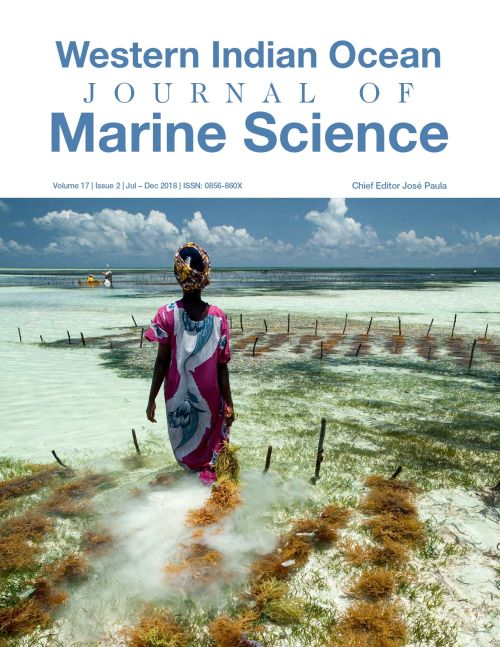Main Article Content
Integrated seaweed – sea cucumber farming in Tanzania
Abstract
We review piloted co-culture experiments of the sea cucumber Holothuria scabra with different seaweed species in existing lagoon-based seaweed farms in Tanzania during 2011-2014. Key questions were whether stocking densities would influence growth rates of both species, and whether deposit feeders would modify organic components in the sediments. From a social perspective, we investigate if local people are readily willing to become involved in sea cucumber farming as an optional livelihood. Seaweed-specific growth rates between 0.32 and 4.1 %d−1 were reported, showing significantly higher values for those treatments combined with sea cucumbers than for the seaweed monocul- ture (F3,1=3.20, p<0.05) at Zanzibar sites. Sea cucumber growth rates ranged from 0.14 to 1.6 gd-1, and all of the studies showed that the treatments holding H. scabra at a low stocking density (average of 130 gm-2) presented a higher growth performance than when it was stocked at more than 200 gm-2. Total organic matter in sediments increased in all treat- ments over the sampling periods (p<0.05). Some 88 percent of the surveyed local people showed willingness to partici- pate in this type of mariculture for livelihood. The survey identified theft and lack of credit as the main hindrances for this activity. H. scabra is viable for lagoon co-culture with seaweed when taking into account proper stocking density, implications on total organic matter and total organic carbon in the system, and local acceptance by local people.





